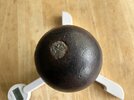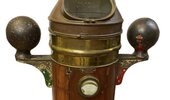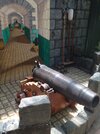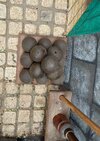British Ordnance Collectors Network
This is a sample guest message. Register a free account today to become a member! Once signed in, you'll be able to participate on this site by adding your own topics and posts, as well as connect with other members through your own private inbox!
cannon ball or mortar ? weight 6 ,5oz and 31/2 " diameter ,found in my garden ten years ago in southampton , been on display in my bedroom since ,
- Thread starter rick
- Start date




